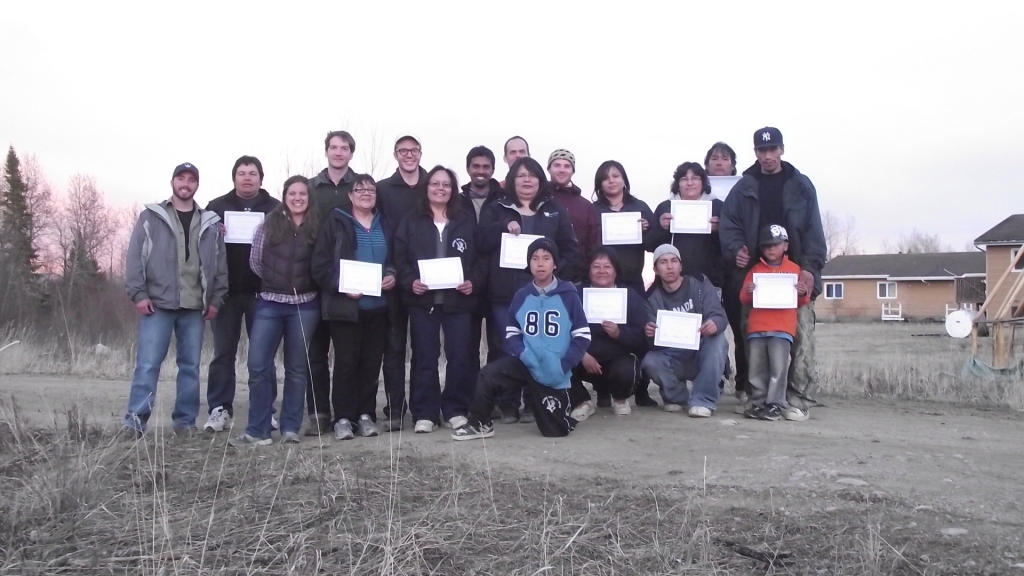Members from across Sachigo Lake First Nation are now capable of responding to emergencies in the community thanks to a pilot program aiming to build emergency response capacity in remote communities.
Ten participants from organizations in Sachigo Lake participated in the emergency response education intiative from May 7 – 11, learning how to deal with a variety of situations including heart attacks, hypothermia and broken limbs while in the bush.
As Sachigo Lake’s health director Jackson Beardy explained, paramedical services are not available when a crisis arises in the community.
“Who is to respond when someone is ill and to get them safely to the nursing station for care, whether it be within the community or out on the land kilometres away,” Beardy said. “This training program has helped to create skills in community members who can unite to take on such a task.”
The course was the second of its type to be held in the community, following the initial Sachigo Lake Wilderness Emergency Response Education Initiative (SLWEREI) in November 2010.
Robert Barkman, one of the participants of the first SLWEREI course, said the trained community members are spread out around Sachigo Lake to help ensure timely responses to emergencies.
“There are people selected to take part in the course that live in various parts of the community,” Barkman said. “If there was an emergency on the Westside, there would be trained people there that would be at the scene almost immediately.”
While this version of the course taught many of the same skills as the first course, such as wilderness first aid, making stretchers out of tarps and trees and using Automated External Defibrillators to help with cardiac arrests, it also offered something new to the community: teachings in how to deal with mental health emergencies.
Dr. Aaron Orkin of Thunder Bay, one of the course’s instructors, said the Sachigo Lake course is one of the only emergency response classes that includes mental health as part of the curriculum.
“Fitting mental health into the course was not easy and is not an easy topic to teach,” Orkin said.
Both Orkin and participants said that the mental health element is crucial when it comes to dealing with emergencies in communities.
“We all need to understand the person on what the situation might be,” said Virginia Beardy, one of the course participants. “It is good to know and it needs to be in other training courses.”
Participants also emphasized that the course’s hands on approach to training helped them feel confident that they can deal with emergencies on their own.
“Having to go outside to actually do what I was learning is a great learning experience,” said Laureen Kaminawaish, one of the participants. “I feel more confident that what I just had learned will stay with me, by doing what I was instructed in class.”
Meanwhile, two researchers were studying the course and its impact on the community. The research will be used to help improve training programs in the future.
Jackson Beardy said the course is part of the solution in addressing the health needs of remote communities and First Nations people.
“We know our communities are close knit, but we still need medical care when someone is hurt,” Beardy said. “It would be great to see this program across our First Nations.”
The program in Sachigo Lake was funded by a grant from the Northern Ontario Academic Medical Association.
Gold has arrived.










Gold has arrived. Here in the north of Ontario we see vast streams of gold shimmering across the landscape as autumn is here and the the leaves are turning...
I am the product, evolution of many thousands of years as are you. I grew up on the land in the remote far north of Ontario following in the footsteps of my...